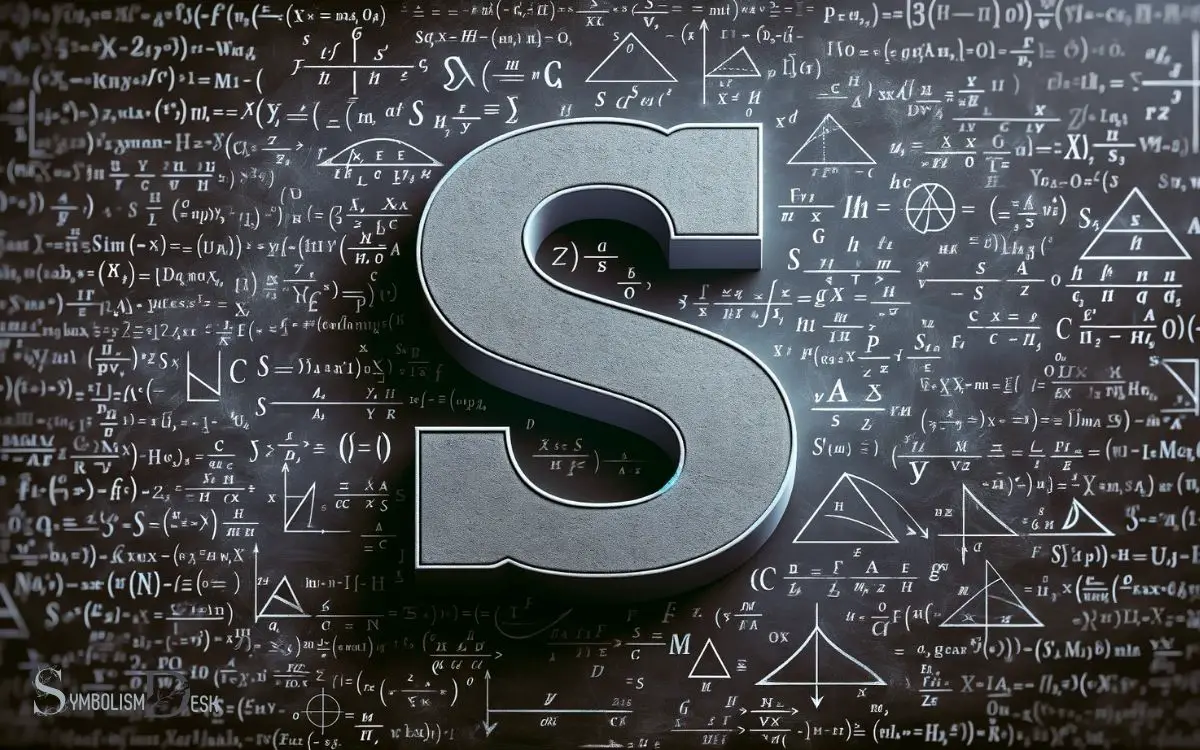Sigma Symbol Meaning in Math: Sequence of Number!
The sigma symbol (Σ) in mathematics is widely used to denote the operation of summation. It indicates the sum of a sequence of numbers, commonly referred to as terms.
In calculus, Σ is used to represent the sum of infinite series, while in statistics, it symbolizes the population standard deviation, a measure of spread or dispersion within a set of data.
The sigma symbol serves multiple purposes in mathematics:
- Example: Σ(i=1 to n) of i represents 1 + 2 + … + n.
Deciphering sigma’s role in math enhances the understanding of summation, series convergence, and data dispersion analysis.

Key Takeaway
Understanding the Sigma Symbol (Σ) in Mathematics – Uses and Examples
| Use Case in Mathematics | Symbol | Description | Example |
|---|---|---|---|
| Summation Notation | Σ | Represents the sum of a sequence of terms from a starting index to an endpoint. | Σ(i=1 to 5) of i = 1 + 2 + 3 + 4 + 5 = 15 |
| Infinite Series | Σ | Used to denote the addition of an infinite list of numbers, often associated with limits in calculus. | Σ(n=1 to ∞) of 1/n² converges to π²/6 |
| Population Standard Deviation | Σ | In statistics, indicates the standard deviation of an entire population. | Σ is used in the formula for standard deviation: √Σ((X – μ)²/N) |
Origin and Symbolic Representation
The origin and symbolic representation of the sigma symbol in math can be traced back to ancient Greek mathematics. The capital Greek letter sigma (Σ) represents the concept of summation in mathematics.
It is used to denote the sum of a set of numbers or mathematical expressions. This symbol was adopted from the Greek alphabet due to its initial association with the sum of the first n integers.
The use of sigma as a mathematical symbol gained prominence through its inclusion in the notation for series and sequences. Its symbolic representation has endured over centuries and remains an integral part of mathematical discourse.
Understanding the historical context and symbolic significance of the sigma symbol provides a foundation for comprehending its role in mathematical operations and notations. This leads us to explore the intricacies of summation notation and its meaning in mathematics.
Summation Notation and Meaning
Exploring the concept of summation notation in mathematics reveals its fundamental meaning and application in mathematical operations. Summation notation, often denoted by the symbol Σ, provides a concise way to represent the addition of a series of numbers or terms.
Understanding summation notation is crucial for various mathematical applications, including calculus, statistics, and discrete mathematics.
It allows for the compact representation of long sums, making it easier to work with and manipulate complex mathematical expressions.
Summation notation is a powerful tool for expressing patterns and regularities in sequences, which is essential in various areas of mathematics and its applications.
Mastery of summation notation is foundational for anyone working in fields that heavily utilize mathematical concepts and operations.
Sigma in Series and Sequences
Understanding the significance of the sigma symbol in mathematics continues with its application in representing series and sequences using a concise and powerful notation.
In series, sigma notation provides a compact way to represent the sum of a sequence of numbers. For instance, the sum of the first 100 positive integers can be denoted as ∑(n) where n ranges from 1 to 100.
This succinct representation simplifies complex arithmetic expressions. In sequences, sigma notation can be used to represent the sum of terms in a sequence up to a certain point.
It provides a clear and efficient way to express the cumulative effect of a sequence. Understanding sigma in series and sequences lays the groundwork for its application in calculus, where it is used to represent and manipulate sums of infinitely many terms.
Application in Calculus
Sigma notation is employed in calculus to manipulate and symbolize sums involving infinitely many terms. Its application in calculus is wide-ranging and essential for understanding and solving various problems.
Here are some key applications:
- Riemann Sums: Sigma notation is used to represent Riemann sums, which approximate the area under a curve and are fundamental to the development of the definite integral.
- Infinite Series: It is utilized to succinctly represent infinite series, allowing for the analysis and manipulation of these series in calculus.
- Sequences and Limits: Sigma notation is integral in dealing with sequences and series, aiding in the study of convergence, divergence, and limits in calculus.
In calculus, sigma notation provides a powerful and compact way to express and work with mathematical concepts involving infinite sums.
Role in Statistics
In the context of statistics, sigma notation plays a pivotal role in representing and analyzing sums of data, extending its application beyond calculus.
In statistics, sigma (Σ) is used to denote summation, indicating that the values within the following expression need to be added together.
This notation is fundamental in various statistical calculations, such as finding the mean, variance, standard deviation, and other measures of central tendency and dispersion.
For instance, the sample mean (x̄) can be expressed using sigma notation as Σx/n, where x represents individual data points and n is the total number of data points.
Moreover, sigma notation is integral to understanding and applying concepts like probability distributions, hypothesis testing, and regression analysis, making it a cornerstone of statistical analysis and inference.
Conclusion
The sigma symbol in mathematics serves as a powerful tool for representing and manipulating series, sequences, and mathematical operations.
Like a conductor leading an orchestra, the sigma symbol orchestrates the elements of mathematics, bringing them together in a harmonious and coherent fashion.
Its significance and utility cannot be understated, as it plays a crucial role in various branches of mathematics, from calculus to statistics.






